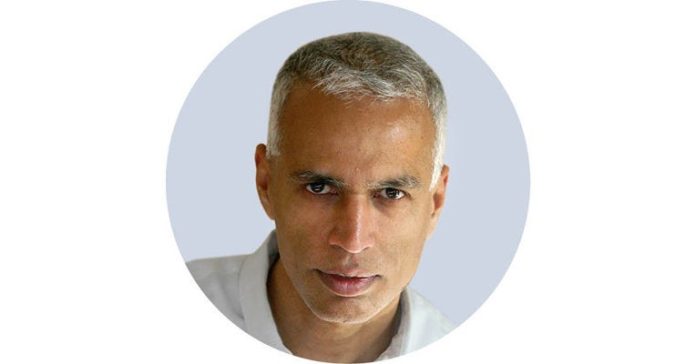
Baltimore — MANY years ago, over lunch at our university cafeteria, I came out as gay to a colleague in the engineering department. “I didn’t realize you were so unconventional,” he said. I tried explaining to him that being gay was innate and had nothing to do with wanting to subvert convention, but he refused to retract his label. Looking back, perhaps he was correct.
For I had violated an unspoken convention of STEM (science, technology, engineering and mathematics): the invisibility of its L.G.B.T. members.
Let me clarify that my university is very gay-friendly. In fact, two years ago, our L.G.B.T. faculty and staff association created a public website to list those members who were comfortable being “out” to students, to help promote visibility. So far, the college of arts, humanities and social sciences has had 13 faculty members sign up. STEM departments, altogether, have had one — me.
The lack of visibility isn’t restricted to academia. My partner, a civil engineer, recalls meeting just two other gay engineers professionally, in a 35-year career.
Statistics are hard to come by, but an analysis by Erin Cech, a sociologist at Rice University, of federal employee surveys found 20 percent fewer L.G.B.T. workers in government STEM-related jobs than should be expected.
Underrepresentation is just one factor that reduces visibility. Unlike women and minorities, whose status is usually obvious, sexual orientation is a hidden characteristic. The fact that a sizable proportion of the L.G.B.T. STEM work force is closeted (43 percent, according to a 2015 estimate) further deepens this effect.
There is a another, more insidious factor at work. STEM culture is very problem-focused. Conversations, even over lunch, typically remain restricted to work matters (which is very different from what I’ve noticed in arts and humanities settings). A colleague who studied in the math department at Spelman College tells of a surreal afternoon on Sept. 11, 2001, when her professor placidly delivered his scheduled lecture on set theory without once mentioning the attacks.
Being too expressive of personal identity can be viewed as running counter to scientific neutrality. In competitive venues, where complete immersion in one’s field might be the promoted ideal, the mention of an extracurricular pursuit can even be seized upon as a lack of commitment. I remember a young mathematician at a prestigious research institute sharing his love for piano playing after hearing I wrote fiction. “Don’t tell anyone in my department I own a piano,” he requested in the next breath.
The pressure to conform is particularly acute in engineering, where, as my partner laments, the training is geared toward everybody arriving lock step at a standard solution. It is unsurprising, then, that Professor Cech and a collaborator have found that heteronormativity is deeply entrenched in the discipline. “Everyone in this field is presumably straight,” a gay male graduate student told them in an interview.
In another interview, a chemical engineer working for a multinational oil company describes the atmosphere as “almost militaristic in terms of how they manage people” and said that they don’t even think diversity is an issue. To cope, many gays and lesbians must learn to suppress crucial aspects of their personalities and compartmentalize their lives.
The federal survey analyzed by Professor Cech shows the effects of such environmental inhospitality. L.G.B.T. workers in STEM-related fields report significantly lower job satisfaction, both when compared to other STEM workers and to L.G.B.T. workers in other fields.
Such discontent — and invisibility — can contribute to a field’s reputation for being unwelcoming. As a result, young lesbians and gays might sell themselves short, aiming for occupations with little use for their talents, but in which they see more people like themselves.
In addition to facilitating greater intellectual fulfillment, diversity in the work force also helps the field. For instance, work by Andras Tilcsik at the Rotman School of Management at the University of Toronto and his collaborators shows that gays and lesbians develop enhanced skills in social perceptiveness — a trait not traditionally sought in engineering settings, but one that could help make them more responsive to human needs.
Although there has been a concerted effort to make STEM fields more diverse in terms of gender and race, L.G.B.T. participation has received comparatively scant attention or resources. An exception is a recent grant by the National Science Foundation to address prejudice against sexual minorities in academic engineering departments. Grass-roots organizations like Out in STEM and the National Organization for Gay and Lesbian Scientists and Technical Professionals are taking the lead to provide mentoring and networking — activities that have proved indispensable in the retention of women and minorities.
An essential step is to break self-perpetuating patterns of concealment. Teachers must come out not just to colleagues, but to students — some of whom will need role models, and all of whom must get used to visible L.G.B.T. professionals to prepare for future workplace settings.
More critically, STEM culture must rein in the pressure to separate professional and personal identities. It should view its workers more holistically, welcoming their interests and differences as sources of enhanced resourcefulness.
Corporations must realize that more profitable alternatives exist for treating engineers as interchangeable units. After years of stubborn resistance, Exxon finally added sexual orientation and gender identity to its anti-discrimination policy in January, reportedly in part to better attract top STEM talent.
After the legalization of gay marriage, the country seems poised to ban job bias. Beyond such protections, though, the goal should be to get to a point where STEM fields genuinely recognize L.G.B.T. members as an asset worth nurturing.







